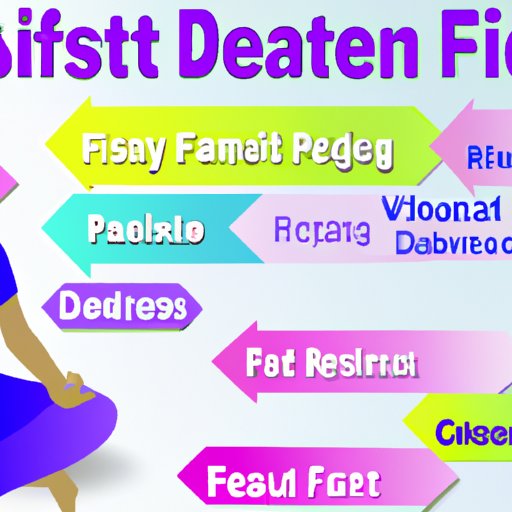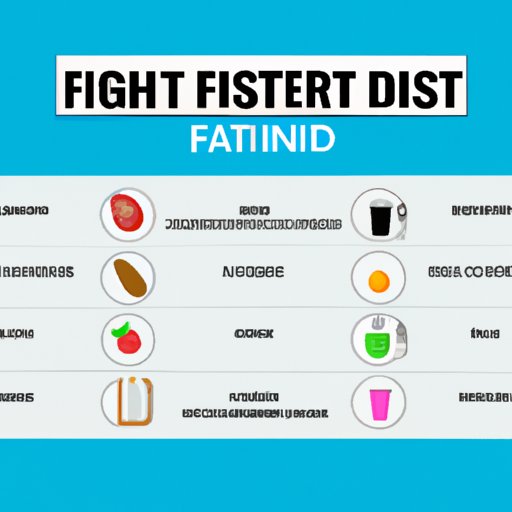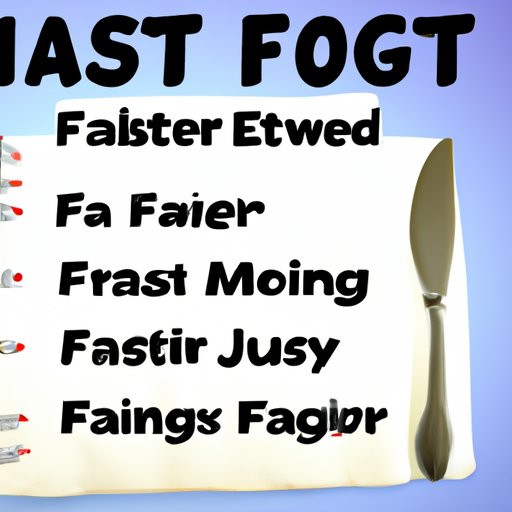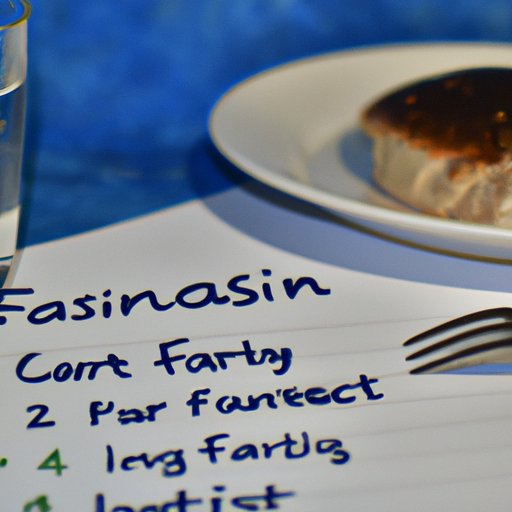Introduction
A fasting diet is a type of dietary regimen that involves limiting your calorie intake for a set period of time. The goal of a fasting diet is to create an energy deficit by consuming fewer calories than you burn. This can lead to weight loss and other potential health benefits.
Fasting diets have become increasingly popular in recent years, with some people claiming they are the “key” to long-term health and weight management. But while there may be some benefits associated with following a fasting diet, it’s important to understand the risks and how to follow one safely.
Definition of Fasting Diet
A fasting diet is any dietary regimen that involves reducing or eliminating food consumption for a specific period of time. Fasting diets may involve complete fasting, which means abstaining from all food, or partial fasting, which involves eating only certain types of foods. There are also several different types of fasting diets, including intermittent fasting, alternate day fasting, and extended fasting.
Intermittent fasting is a type of fasting diet that involves alternating periods of eating and fasting. For example, some people practice 16:8 intermittent fasting, which involves eating all of their meals within an 8-hour window and fasting for the remaining 16 hours. Alternate day fasting is another type of fasting diet that involves fasting every other day. Extended fasting is a more extreme form of fasting diet that involves going without food for several days or weeks at a time.

Benefits and Risks of Fasting Diets
Proponents of fasting diets claim that they offer numerous health benefits, including weight loss, improved metabolic health, and reduced inflammation. Research has shown that fasting diets may be effective for weight loss, with one study finding that alternate day fasting resulted in an average weight loss of 4.2 kg (9.3 lbs) over a 12-week period.
Fasting diets may also improve metabolic health markers, such as cholesterol levels. One study found that alternate day fasting resulted in a 7% reduction in total cholesterol and a 9% decrease in LDL (“bad”) cholesterol after 3 months.
However, fasting diets may also come with certain risks. These include dehydration, nutrient deficiencies, and an increased risk of disordered eating. It’s important to speak with your doctor before starting any new diet, especially a fasting diet, to make sure it’s safe for you.
How to Follow a Fasting Diet
If you’re interested in trying a fasting diet, there are several steps you can take to ensure you’re doing it safely and effectively.
Types of Fasting Diets
The first step is to decide which type of fasting diet is right for you. As mentioned above, there are several different types of fasting diets, including intermittent fasting, alternate day fasting, and extended fasting. Consider your lifestyle and preferences when deciding which type of fasting diet is best for you.

Guidelines for Following a Fasting Diet
Once you’ve chosen a type of fasting diet, it’s important to establish some guidelines for yourself. For example, if you’re following an intermittent fasting diet, decide which hours you will eat and which hours you will fast. Additionally, make sure to drink plenty of water during your fasting periods and avoid unhealthy behaviors, such as overeating or binging on unhealthy foods.

What to Eat and Avoid on a Fasting Diet
It’s also important to consider what types of foods you should eat and avoid while following a fasting diet. During your eating periods, focus on whole, unprocessed foods that are rich in protein, fiber, and healthy fats. Examples include lean proteins, fruits, vegetables, whole grains, nuts, and seeds.
During your fasting periods, it’s important to avoid foods and drinks that contain calories, such as sugary beverages and processed snacks. Additionally, it’s best to avoid alcohol during fasting periods, as it can interfere with your body’s ability to burn fat.
Recipes for Fasting Diets
Finally, it’s important to have some go-to recipes when following a fasting diet. Here are some delicious breakfast, lunch, and dinner recipes that are perfect for fasting diets:
Breakfast Recipes:
- Overnight Oats with Berries and Almonds
- Egg and Avocado Toast
- Greek Yogurt Parfait with Nuts and Seeds
Lunch Recipes:
- Quinoa Salad with Chickpeas and Veggies
- Turkey and Hummus Wrap
- Taco Bowl with Brown Rice and Beans
Dinner Recipes:
- Seared Salmon with Roasted Vegetables
- Veggie Stir Fry with Tofu
- Black Bean Soup with Avocado Slices
Conclusion
Fasting diets are a popular way to lose weight and improve overall health. However, it’s important to understand the potential benefits and risks associated with fasting diets before trying one. Be sure to talk to your doctor before starting any new diet, and follow the guidelines and recipes outlined above to ensure a safe and successful fasting experience.
In summary, fasting diets can be a great tool for weight loss and improved metabolic health, but it’s important to understand the risks and to follow the guidelines and recipes outlined above. With the right approach, fasting diets can be a safe and effective way to reach your health goals.
(Note: Is this article not meeting your expectations? Do you have knowledge or insights to share? Unlock new opportunities and expand your reach by joining our authors team. Click Registration to join us and share your expertise with our readers.)
